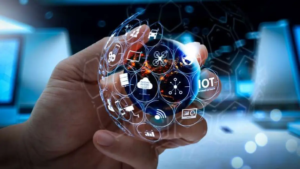
Portrait Of Laughing Multi-Cultural Medical Team Standing In Hospital Corridor
Remote Patient Monitoring (RPM) is an increasingly popular practice in healthcare today. RPM enables healthcare providers to remotely monitor patients’ vital signs and health indicators, such as heart rate, blood pressure, oxygen saturation level, and more.
This gives doctors access to real-time patient data to help them make better decisions regarding diagnosis and treatment plans. RPM also helps reduce hospital visits, allowing for timely interventions and care by providing faster diagnosis and treatment.
This blog post will discuss the main benefits of RPM.
Safety from Disease Transmission
Remote patient monitoring is an effective tool to help prevent the transmission of disease and improve patient health outcomes. This technology enables healthcare professionals to remotely monitor a patient’s vital signs, such as heart rate and respiration.
By tracking changes in these metrics, doctors can more quickly identify potential issues before they become more severe illnesses. On top of this, remote patient monitoring systems are often integrated with other technologies, such as patient messaging apps or digital health programs. This setup allows for quick and efficient communication between care teams and patients.
Less Burden on Hospital Resources
Remote patient monitoring helps to free up limited hospital resources by allowing healthcare providers to monitor patients from a distance. This technology allows healthcare practitioners to actively track vital signs and other health indicators without physically having to be in the same room as the patient. Doing so reduces strain on limited medical resources, such as beds and personnel, while still providing quality care.
Quick Access to Patient Data
Remote patient monitoring is a critical tool for quick access to patient data and history. This helps medical professionals provide accurate diagnoses, tailored treatment plans, and better care for patients in remote locations.
By using remote patient monitoring, doctors can securely monitor things like blood pressure or heart rate and biometric data like weight and glucose levels. This quick access to patient data is invaluable in providing timely and effective care to patients living far away from a hospital or doctor’s clinic.
Better Communication and Engagement
The use of configurable remote patient monitoring helps to better the communication between doctors and patients, enabling better engagement with each other. Through this technology-driven process, physicians are able to better monitor their patients’ conditions in real time for better care and better decisions. This improved engagement helps improve the level of care provided to patients since it allows doctors to better understand their patients’ needs.
Patients also benefit from better communication with their healthcare provider as it allows them to better track their health and control their health better. With better communication, engagement, and care, remote patient monitoring is a powerful tool for doctors and patients.
Compensates for the Shortage of Medical Staff
Remote patient monitoring is a valuable tool for addressing staff shortages in the healthcare industry. Providing real-time data to medical staff can help bridge gaps in staff availability.
For example, when hospitals face staff shortages due to illness or vacation time, remote patient monitoring can provide staff with greater visibility into patients’ health and enable them to make better-informed decisions about care.







